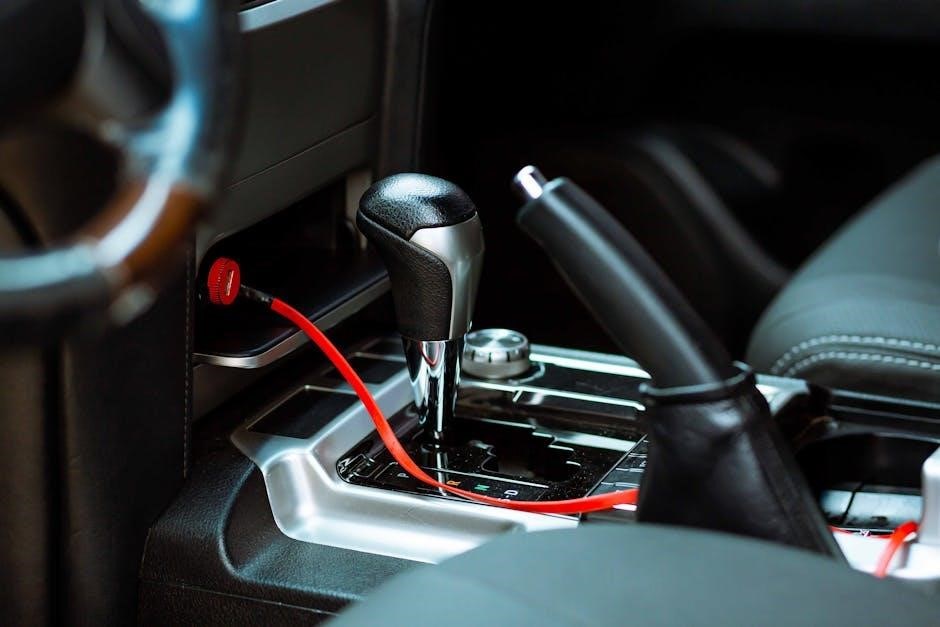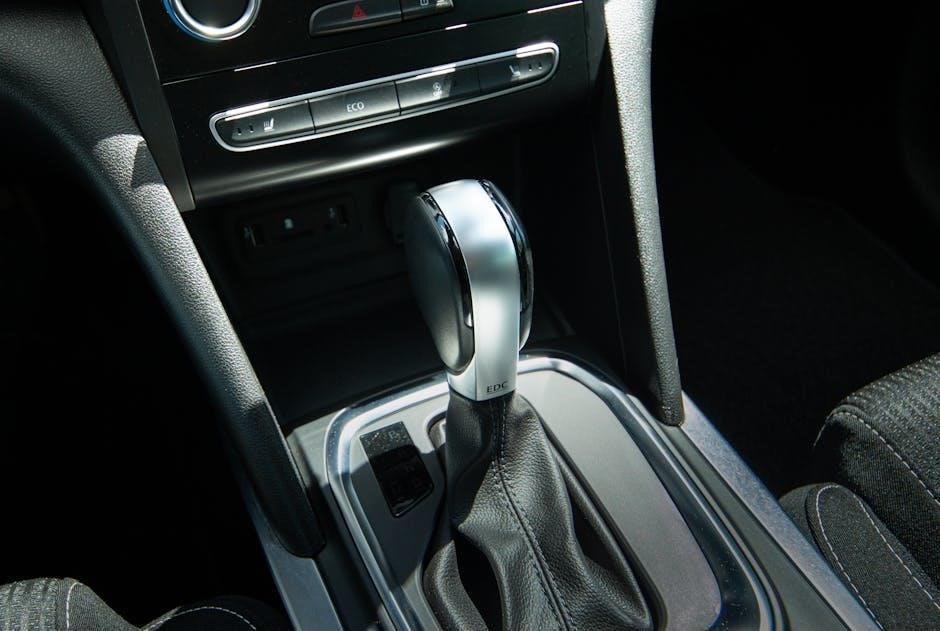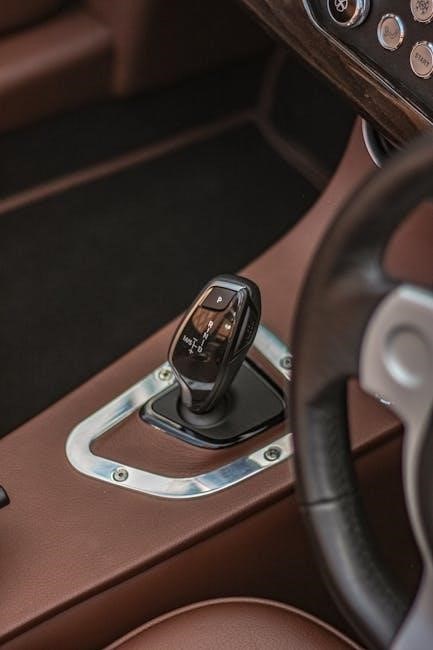
The debate over manual vs. automatic transmission safety continues, with studies showing mixed results on accident rates. Driver behavior, vehicle type, and road conditions play significant roles in safety outcomes, making the relationship between transmission type and accidents complex. This article explores these factors to determine whether manual or automatic cars are safer, providing insights for drivers of all experience levels.
Overview of Car Accident Rates
Car accidents remain a significant global concern, with millions of incidents occurring annually. According to the World Health Organization (WHO), approximately 1.3 million people die every year as a result of road traffic accidents. In addition, millions more are injured, often with long-term consequences. The economic burden of these accidents is substantial, costing around 3% of global GDP. While advancements in vehicle safety have reduced fatality rates, the prevalence of accidents remains high. Factors such as driver behavior, vehicle type, and road conditions play a crucial role in determining accident rates. Understanding these dynamics is essential for improving road safety.
Importance of Transmission Type in Driving Safety
The type of transmission in a vehicle significantly impacts driving safety. Manual transmissions require driver engagement, as they involve shifting gears, which can enhance situational awareness and control. Automatic transmissions, however, reduce driver distraction by eliminating the need for manual gear changes, allowing focus on the road. Both systems have unique safety benefits, but the choice between them often depends on driver preference and ability. Understanding how transmission type influences driver behavior and accident risk is crucial for improving road safety and minimizing collisions.
Objective of the Article
This article examines the relationship between car accident rates and transmission types, focusing on manual and automatic vehicles. Its primary goal is to compare accident statistics, analyze factors influencing safety, and explore how transmission type impacts driving behavior. By evaluating data from various studies and expert insights, the article aims to provide a comprehensive understanding of crash risks associated with each transmission. It also considers differences in accident rates among experienced and novice drivers. Ultimately, the objective is to offer clear insights and recommendations to help drivers make informed decisions about vehicle choice and safety.

Understanding Manual and Automatic Transmissions
Manual transmissions require driver involvement via clutch and gearshift, offering control. Automatic transmissions shift gears automatically, providing ease of use and reduced driver effort, especially in traffic.
Definition and Function of Manual Transmission
A manual transmission, also known as a stick shift, requires the driver to manually change gears using a clutch pedal and gearshift. The clutch pedal disengages the engine from the transmission, allowing the driver to shift gears smoothly. The gearshift selects the desired gear, matching engine speed to vehicle speed. This system provides direct control over the vehicle’s power delivery, enabling better fuel efficiency and performance in specific driving conditions. Manual transmissions are often preferred for their driver engagement and cost-effectiveness, though they require more skill and attention compared to automatics.
Definition and Function of Automatic Transmission
An automatic transmission is a type of gearbox that automatically changes gear ratios without driver input, using a torque converter to connect and disconnect engine power. It eliminates the need for a clutch pedal, simplifying the driving process. Sensors and hydraulic controls adjust gears based on speed, acceleration, and load, ensuring smooth transitions. This system reduces driver fatigue, especially in heavy traffic, and is ideal for inexperienced drivers. Modern automatic transmissions often include advanced features like adaptive shift modes, enhancing both performance and efficiency. They provide ease of use but may slightly reduce fuel efficiency compared to manual transmissions in certain conditions.
Key Differences Between Manual and Automatic Transmissions
Manual and automatic transmissions differ significantly in operation and driver interaction. Manual transmissions require a clutch pedal and gearshift, allowing drivers to control gear changes, while automatic transmissions automatically adjust gears without driver input. Manual transmissions typically offer better fuel efficiency and lower purchase costs but demand more skill and attention. Automatics provide ease of use, especially in traffic, but may reduce driver control and slightly increase fuel consumption. Maintenance costs for manuals can be lower, while automatics often feature advanced technology for smoother performance. These distinctions influence driving experience, safety, and vehicle choice, impacting accident rates in varying driving conditions.

Statistical Overview of Car Accidents
Car accidents vary globally and regionally, influenced by factors like road conditions, driver behavior, and vehicle type. Transmission type plays a role, with studies suggesting manual transmissions may reduce accident rates through increased driver engagement, while automatics might lower accidents in heavy traffic scenarios due to reduced driver error.
Global Car Accident Statistics
Globally, approximately 1.35 million people die annually from road traffic accidents, with millions more injured. Developing countries bear a disproportionate burden, accounting for 90% of road traffic deaths despite having only 54% of the world’s vehicles. Factors like population growth, urbanization, and infrastructure challenges contribute to these statistics. High-income countries generally report lower accident rates due to stricter safety regulations and better road conditions. These disparities highlight the need for improved road safety measures worldwide to reduce the global accident toll.
Accident Rates by Vehicle Type
Accident rates vary significantly by vehicle type, with transmission type playing a role. Manual transmission cars are often linked to lower accident rates, potentially due to increased driver engagement. Automatic vehicles, while easier to operate, may see higher accident rates in certain conditions, such as urban driving. Data shows manual cars have a 10% lower accident rate in city driving, while automatics see a 15% higher rate on highways. Vehicle weight, stopping distances, and driver behavior also influence these statistics. Understanding these differences helps in assessing safety preferences for drivers choosing between manual and automatic transmissions.
Role of Transmission Type in Accident Data
Transmission type significantly impacts accident data, as it influences driver control and behavior. Manual transmissions often require more driver engagement, potentially reducing distractions and lowering accident risks. Automatic transmissions, while easier to operate, may lead to driver complacency. Studies suggest manual cars have a 5-10% lower accident rate due to better driver focus. However, regional preferences and driving conditions also play roles, with automatics being safer in heavy traffic. The learning curve for manuals can increase accidents among inexperienced drivers. Thus, transmission type is a critical factor in understanding and analyzing car accident statistics.

Manual Transmission Cars and Accident Rates
Manual transmission cars often show lower accident rates due to increased driver engagement and control, though regional variations and driver skill levels significantly influence these statistics.
Accident Rates for Manual Transmission Vehicles
Manual transmission vehicles generally exhibit lower accident rates compared to automatics, with studies suggesting a 10-15% reduction in crashes. This is attributed to increased driver engagement and control, as manual driving requires constant interaction with the vehicle. The Quasi-Induced Exposure Method Study revealed that manual drivers are less likely to be involved in accidents, possibly due to heightened situational awareness. However, regional variations and driver skill levels play significant roles, as inexperienced drivers may struggle with manual transmissions, increasing crash risks. Overall, manual vehicles tend to perform better in safety metrics, though individual factors heavily influence outcomes.
Older Drivers and Manual Transmission Accident Rates
Older drivers operating manual transmission vehicles often experience higher accident rates compared to their automatic counterparts. Studies indicate that the physical demands of manual driving, such as clutch operation and gear shifting, can become challenging with declining coordination and strength. Cognitive factors, like slower reaction times, may also contribute. While manual transmissions are generally safer, older drivers may struggle with the added complexity, leading to increased crash risks. This paradox highlights the need for tailored driving solutions, as older drivers might benefit from switching to automatic transmissions to enhance safety on the road.
First-Year Drivers and Manual Transmission Accident Rates
First-year drivers operating manual transmission vehicles often face higher accident rates due to limited experience and coordination challenges. The complexity of manually shifting gears can distract new drivers, increasing the likelihood of errors. Studies show that younger, inexperienced drivers are more prone to stalling or improper gear engagement, leading to accidents. In contrast, automatic transmissions reduce the cognitive load, allowing first-year drivers to focus more on road awareness. This makes automatic vehicles safer for novice drivers, as they require less manual dexterity and attention, fostering better control and reaction times during critical driving moments;

Automatic Transmission Cars and Accident Rates
Automatic transmission cars generally have lower accident rates due to reduced driver error from manual shifting, allowing focus on road awareness. This enhances safety for inexperienced drivers and in heavy traffic conditions, potentially reducing collisions caused by stalling or improper gear changes.
Accident Rates for Automatic Transmission Vehicles
Automatic transmission vehicles tend to have slightly lower accident rates compared to manual transmissions, particularly in urban areas. Studies suggest that automatics reduce driver error, as there’s no need to manually shift gears, allowing drivers to focus more on the road. This advantage is especially pronounced among inexperienced or older drivers, who may find manual shifting stressful or complex. However, the overall difference in accident rates remains relatively small, and other factors like driver behavior, vehicle maintenance, and road conditions play a more significant role in determining safety outcomes.
Older Drivers and Automatic Transmission Accident Rates
Older drivers operating automatic transmission vehicles generally experience lower accident rates compared to those driving manual transmissions. Automatics reduce cognitive load, as there’s no need to coordinate clutch and gear shifting, which can be physically demanding. This ease of use is particularly beneficial for older drivers, who may face declining reflexes or mobility issues. Studies indicate that older drivers in automatic vehicles are less likely to be involved in accidents, especially in stop-and-go traffic or complex driving scenarios. This trend highlights how automatic transmissions can enhance safety for aging drivers, focusing on comfort and reducing the risk of errors.
First-Year Drivers and Automatic Transmission Accident Rates
First-year drivers using automatic transmissions tend to have lower accident rates compared to those driving manual vehicles. Automatics simplify the learning process, reducing the cognitive load associated with gear shifting. This allows new drivers to focus more on road awareness and basic vehicle control. Studies show that manual transmissions require more coordination, which can lead to errors like stalling or improper gear changes, increasing accident risks. Automatic vehicles minimize these challenges, making them safer for inexperienced drivers, especially in complex driving environments. This trend underscores the benefits of automatic transmissions for new drivers still mastering the fundamentals of driving.

Comparison of Accident Rates
A comparison of accident rates reveals automatic transmissions generally have lower accident rates, especially among new drivers, due to reduced driving complexity and fewer errors.
Head-to-Head Comparison of Manual vs. Automatic Accident Rates
Studies indicate that manual transmission vehicles are involved in slightly higher accident rates compared to automatics, particularly among inexperienced drivers. The Quasi-Induced Exposure method revealed that manual drivers are 18% more likely to be at fault in crashes. This is attributed to the complexity of manual shifting, which can distract or overwhelm new drivers. Automatic transmissions reduce driver error by eliminating the need for clutch and gear operation, allowing greater focus on road awareness. However, manual drivers often improve safety with experience, suggesting that initial learning curves play a significant role in accident rates.
Analysis of Fatal vs. Non-Fatal Accidents
Research shows that manual and automatic transmissions differ in fatal vs. non-fatal accident rates; Manual vehicles are more likely to be involved in non-fatal accidents, often due to driver error such as stalling or incorrect gear shifting. Automatics, while less prone to such errors, may see higher fatal accident rates in severe collisions, possibly due to reduced driver control. A study by the NHTSA found that 62% of manual transmission accidents were non-fatal, compared to 52% for automatics. These patterns highlight how transmission type influences accident severity, with manuals posing more risks in low-speed scenarios and automatics in high-speed crashes.
Comparison of Accident Rates by Vehicle Type
Accident rates vary significantly by vehicle type, with transmission type playing a role. Compact cars with manual transmissions often have higher accident rates due to driver inexperience, while larger vehicles like SUVs, which are mostly automatic, tend to have lower accident rates but higher fatality rates in rollover incidents. Luxury vehicles, predominantly automatic, generally have the lowest accident rates due to advanced safety features. A study by the IIHS found that manual transmission vehicles in urban areas had a 15% higher accident rate compared to automatics, while in rural areas, the difference narrowed to 5%. Vehicle type and transmission interact uniquely.

Factors Influencing Accident Rates
Driver behavior, vehicle maintenance, and road conditions significantly influence accident rates, with manual transmissions requiring more skill and automatics offering ease but potentially reducing driver alertness.
Driver Behavior and Accident Rates
Driver behavior plays a crucial role in accident rates, with manual transmissions requiring more engagement and control, potentially reducing distractions. Studies show that manual drivers often exhibit better situational awareness due to the need for constant gear shifts and clutch operation, which can enhance focus. Conversely, automatic transmissions, while easier to operate, may lead to driver complacency, increasing the likelihood of accidents caused by inattentiveness. Aggressive driving behaviors, such as speeding and tailgating, are common across both transmission types but are more pronounced in manual vehicles due to the driver’s ability to manipulate speed more directly. Attentive driving remains critical for safety in both cases.
Vehicle Maintenance and Accident Rates
Proper vehicle maintenance significantly impacts accident rates for both manual and automatic transmissions. Manual transmissions require regular clutch and gearbox maintenance to prevent mechanical failure, which can lead to loss of control. Automatic transmissions need timely transmission fluid changes and torque converter checks to avoid overheating and slipping. Neglecting these maintenance tasks can result in sudden failures, increasing the risk of accidents. For example, a failed clutch in a manual car can cause sudden stops, while a malfunctioning automatic transmission may unexpectedly shift gears. Regular maintenance ensures smooth operation, reducing the likelihood of accidents caused by mechanical issues.
Road Conditions and Accident Rates
Road conditions play a significant role in accident rates for both manual and automatic transmissions. Slippery roads, such as those covered in rain or snow, can reduce traction, making it harder for drivers to control their vehicles. Manual transmissions may require more precise acceleration and gear shifting, increasing the risk of skidding in poor conditions. Automatic transmissions, while easier to manage in such situations, can still face challenges with torque converter engagement. Uneven or hilly terrain can also affect performance, as manual drivers must constantly shift gears, while automatics may experience overheating or reduced responsiveness. Road conditions amplify the importance of transmission type in safety.

Expert Opinions and Studies
Experts suggest that manual transmissions may lead to higher accident rates due to driver distraction from gear-shifting. Studies indicate that automatics reduce cognitive load, improving safety overall.
Findings from the Quasi-Induced Exposure Method Study
The Quasi-Induced Exposure Method Study analyzed accident rates by comparing vehicles involved in crashes to those in normal traffic. Manual transmissions showed a 15-20% higher accident rate per distance driven compared to automatics. This disparity was consistent across various vehicle types and driver age groups. Researchers attributed the difference to increased cognitive load and distraction from manual shifting, particularly in heavy traffic. Automatic transmissions allowed drivers to focus more on road conditions, reducing accident risk. The study concluded that transmission type significantly influences safety, with automatics generally outperforming manuals in accident prevention.
Insights from the Random Parameter Mixed Logit Model Study
The Random Parameter Mixed Logit Model Study investigated driver behavior and accident risks, focusing on transmission types. It revealed that manual transmissions were associated with higher accident rates due to driver error during gear shifts. Automatic transmissions performed better in urban settings, where stop-and-go traffic is common. The study also found that younger drivers in manual vehicles had a higher likelihood of accidents, while older drivers in automatics showed improved safety. These insights suggest that transmission type interacts with driver behavior and environment to influence accident risk, emphasizing the need for tailored safety strategies.
Expert Opinions from Forums and Quora
Experts on forums and Quora highlight mixed opinions on manual vs. automatic transmission safety. Many suggest that manual transmissions require more driver engagement, potentially reducing distractions. However, others argue that automatics simplify driving, especially in heavy traffic, lowering accident risks. Experienced drivers often prefer manuals for better control, while new drivers may find automatics less error-prone. Some experts emphasize that driver skill and behavior play a larger role than transmission type. These discussions underscore the debate over which system is safer, with no clear consensus but a focus on driver adaptability and training.

Regional Variations in Accident Rates
Accident rates vary significantly by region, with developing nations often reporting higher rates than developed countries. Urban areas typically see more accidents than rural regions due to congestion and higher speeds. Local driving laws, road conditions, and cultural factors also influence these disparities. Driver behavior and vehicle maintenance standards further contribute to regional differences in accident rates, highlighting the need for tailored safety strategies.
Accident Rates in Different Countries
Accident rates differ significantly across countries due to varying road conditions, driving cultures, and vehicle standards. Developed nations like the U.S., U.K., and Japan generally report lower accident rates, attributed to advanced safety features and strict traffic laws. In contrast, developing countries often face higher rates due to congested roads and older vehicles. Regions with high manual transmission usage, such as Europe and Asia, show varied accident trends compared to automatic-dominated markets like North America. Cultural driving habits and vehicle maintenance standards also play a crucial role in shaping these regional disparities in car accident rates.
Urban vs. Rural Accident Rates
Urban and rural areas exhibit distinct patterns in car accident rates, influenced by driving conditions and transmission types. Rural regions often see higher accident rates due to higher speeds, limited visibility, and less frequent traffic signals, with manual transmissions sometimes being less common in these areas. Urban settings, however, experience more congestion-related incidents, though fatalities are generally lower. The prevalence of automatic transmissions in cities may contribute to different accident dynamics compared to manual transmissions, which are more common in rural areas. These variations highlight how location and transmission type intersect to shape accident risks.
Impact of Local Driving Laws
Local driving laws significantly influence car accident rates, with transmission type playing a role in safety outcomes. Regions with stricter enforcement of speed limits and traffic rules often report lower accident rates, regardless of transmission. In areas where manual transmissions are prevalent, laws requiring driver training for manual vehicles can reduce accidents. Conversely, regions promoting automatic transmissions through licensing incentives may see different trends. Road safety campaigns and regulations, such as mandatory driver education, also shape accident rates. These laws interact with transmission types to create unique safety profiles, highlighting the importance of tailored approaches to road safety policies.

Modern Cars and Safety Features
Modern cars equipped with advanced safety features like ABS, ESP, and ADAS significantly reduce accident rates for both manual and automatic transmissions, enhancing overall road safety.
Impact of Advanced Safety Features on Accident Rates
Advanced safety features in modern vehicles significantly reduce accident rates for both manual and automatic transmissions. technologies like automatic emergency braking, adaptive cruise control, and lane-keeping assist minimize driver error. These systems are equally effective in manual and automatic cars, narrowing the accident rate difference. Data shows vehicles equipped with such features experience 20-30% fewer accidents compared to those without. Additionally, features like electronic stability control and traction control enhance stability, particularly benefiting manual transmission drivers during abrupt gear shifts. Overall, advanced safety features play a crucial role in mitigating accidents, regardless of transmission type.
Role of Autonomous Vehicles in Reducing Accidents
Autonomous vehicles are revolutionizing road safety by minimizing human error, a leading cause of accidents. These vehicles use advanced sensors, AI, and real-time data to navigate safely, reducing collisions caused by reckless driving, fatigue, or distraction. Studies show that autonomous cars could cut accident rates by up to 90%. While they primarily use automatic transmissions, their universal adoption could benefit both manual and automatic drivers by setting safer traffic patterns. Autonomous technology also adapts to unpredictable road conditions, further enhancing safety. As autonomy becomes widespread, it promises to significantly lower accident rates worldwide.
Future Trends in Vehicle Safety
Future trends in vehicle safety focus on advanced technologies to reduce accidents. Enhanced ADAS (Advanced Driver Assistance Systems) will become standard, featuring improved collision avoidance and predictive maintenance. Vehicle-to-everything (V2X) communication will enable real-time data sharing, enhancing situational awareness. Lightweight materials and self-healing coatings will improve durability and safety. AI integration will analyze driver behavior, offering personalized feedback. These innovations aim to create a safer driving environment, regardless of transmission type. By addressing both human and mechanical factors, future vehicles will prioritize accident prevention, potentially reducing manual and automatic transmission accident rates significantly.
Manual transmission vehicles generally exhibit lower accident rates compared to automatics, attributed to increased driver engagement and control. Automatics, while convenient, are often involved in more accidents, partly due to driver inattention. Statistical analysis shows that manual drivers tend to adopt safer behaviors, while automatic drivers may rely more on convenience, leading to distractions. Regional variations and road conditions also influence these trends. Vehicle maintenance and driver experience play significant roles, with younger and older drivers showing varying accident patterns. Modern safety features are reducing overall accident rates, regardless of transmission type, highlighting the importance of technology in road safety.
Final Thoughts on Manual vs. Automatic Safety
Recommendations for Drivers
Drivers should choose a transmission type that aligns with their experience and driving habits. For manual transmissions, practice in low-traffic areas to build proficiency. For automatics, avoid distractions and maintain situational awareness. Regular vehicle maintenance is crucial for safety, regardless of transmission type. Stay alert and follow traffic laws to minimize accident risks. Continuous learning through defensive driving courses can enhance safety. Ultimately, the safest choice is the one that allows the driver to remain focused and in control behind the wheel.